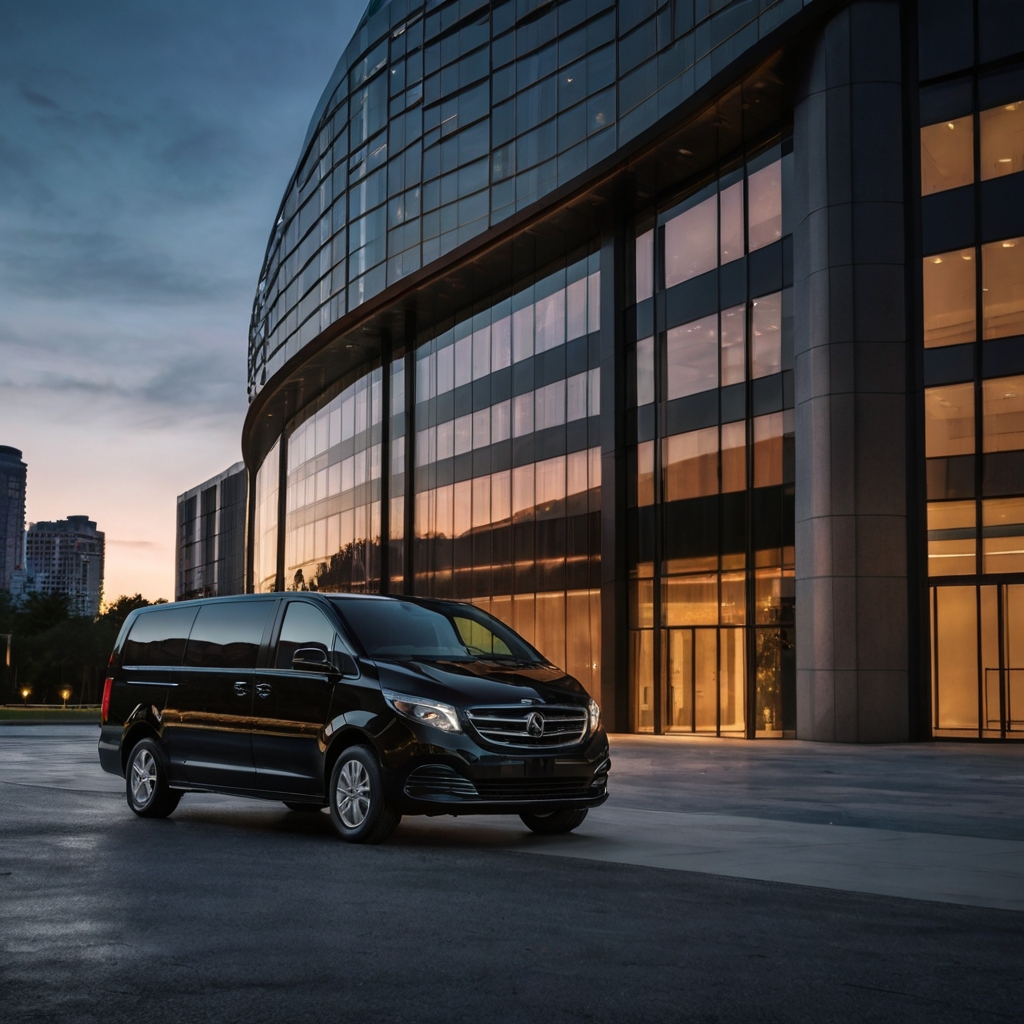Imagine delivering a truly impactful presentation no matter where you are!
Let’s be honest: travel can derail even the best-laid plans. Equipment malfunctions, lost slides, and disrupted schedules threaten to ruin your message. But what if there was a way to ensure a smooth, professional delivery every time?
Picture yourself confidently presenting without worrying about logistical nightmares. A seamless experience that boosts your credibility and captivates your audience.
You want to stick around for point number 6, as it might just reveal the long lost way to truly deliver a killer presentation on the road.
Presentation Delivery Confidence Boost
Does the thought of stepping onto a stage, even a small one fill you with a knot in your stomach? It’s more common than many realize.
That shaky voice, the racing pulse, the sudden blankness¦ it happens to almost everyone. You might think it’s about nerves, but it’s often rooted in something deeper: a lack of control and certainty.
Imagine feeling completely comfortable, projecting your message with clarity and passion captivating your audience without a single stumble. That’s within reach.
The key isn’t eliminating nervousness entirely; it’s about mastering that nervousness and building genuine confidence through preparation and focused techniques.
Every wasted moment spent worrying about what might go wrong is an opportunity lost to honing a delivery that resonates powerfully.
But here’s what most presentation coaches won’t explicitly tell you: true confidence isn’t born from eliminating fear, it’s built by deliberately shaping your mindset and mastering the tools for a truly impactful experience.
Let’s explore exactly how to transform those anxieties into an advantage starting right now.
Mastering Route Logistics Strategic Planning
 Every presentation’s success hinges on smooth logistics. That means thinking about your route ahead of time”it’s more than just driving somewhere.
Every presentation’s success hinges on smooth logistics. That means thinking about your route ahead of time”it’s more than just driving somewhere.
Strategic planning starts with mapping out every stage of your journey. Consider traffic patterns, potential delays, and alternate routes.
Don’t rely solely on GPS; familiarize yourself with the area. Knowing key landmarks and backup roads can save you precious time and reduce stress when things don’t go as planned. A little preparation goes a long way!
Think about parking” research options in advance to avoid circling around looking for spots at the last minute.
Also, factors in travel time allow an extra buffer for unexpected circumstances like road closures or increased traffic. It’s better to arrive early and relaxed than rushed and flustered.
Mastering route logistics”strategic planning is about anticipating challenges and proactively ensuring a seamless transition from your preparation to delivering an impactful presentation.
Vehicle Wellness Performance Optimization Crucial
What’s crucial for a seamless presentation is ensuring your transport performs flawlessly.
Regular vehicle maintenance makes all the difference in keeping things running smoothly” think oil changes, tire pressure checks, and brake inspections. These aren’t just suggestions; they are vital to maintaining peak performance and minimizing unexpected issues on the road.
A well-maintained engine runs more efficiently, reducing fuel consumption and ensuring a consistent ride quality. Similarly, properly inflated tires improve handling and safety.
Consider your vehicle’s overall wellness” this includes things like fluid levels, battery health, and the condition of belts and hoses. Addressing these proactively can prevent major breakdowns and costly repairs.
Ultimately, prioritizing vehicle wellness performance optimization crucial is about safeguarding a confident and successful journey to your presentation destination.
Conscious Driving Habits Intentional Control
While navigating those long drives, its easy for thoughts to drift. Maintaining a steady pace is key” consciously choosing your speed and route can make a huge difference.
Focusing on intentional control helps you stay centered and calm during any journey.
Try setting small, achievable goals for each leg of the trip like reaching a specific landmark or listening to a particular segment of music. This keeps your mind engaged and prevents it from wandering into anxious thoughts about the drive itself.
Practicing mindful awareness while driving can significantly reduce stress levels.
Pay attention to how you’re feeling” noticing any tension in your body or racing thoughts, then gently redirecting your focus back to the road and the present moment. It’s about being fully present with the drive itself.
Ultimately, embracing this intentional control over your driving habits contributes to a smoother, more relaxed journey both physically and mentally.
Reactive Driving Techniques Anticipate the Chaos
It’s about staying one step ahead when things get hectic. The road isn’t always smooth, and sometimes a sudden change throws you off course.
Anticipating potential issues is key to keeping your presentation on track. Think about what could go wrong: traffic delays, unexpected road closures, or even just a driver needing a break.
Planning for these scenarios helps you react calmly and efficiently rather than panicking when something unforeseen happens. Having alternative routes mapped out can make all the difference.
You need to be constantly scanning your surroundings, checking traffic apps, noting road signs, and being aware of other vehicles.
This heightened awareness allows you to proactively adjust your route or speed if necessary, minimizing disruption to your schedule. It’s about anticipating the chaos, not just reacting to it.
Essentially, by actively preparing for potential challenges and maintaining a vigilant approach while on the road, you can ensure a seamless journey and deliver that presentation with confidence.
Navigating Road Disruptions Creative Problem-Solving
Every journey begins with a plan, but sometimes those plans hit unexpected bumps in the road.
This is because disruptions like traffic delays or road closures can throw off your schedule and impact your presentations.
Imagine arriving late to an important meeting due to unforeseen circumstances; it creates stress and potentially damages your credibility. These interruptions can derail even the most well-prepared delivery.
To help you navigate these disruptions, consider building flexibility into your travel plans.
Factor in extra time for potential delays when mapping out your route. Download offline maps to stay connected even without cell service. Have alternative routes planned and readily available. A little preparation can go a long way in minimizing the impact of unexpected road issues.
The key is proactive planning. By anticipating challenges and having backup strategies, you’ll feel more confident and prepared, regardless of what happens on your journey to deliver your presentation.
Impact of External Factors Sensory Overload
It’s like this: a fantastic presentation can quickly lose its impact when external factors throw a wrench in things.
The biggest culprit? Often it’s sensory overload distractions that hijack attention and diminish your message’s effect.
Think about the environment you’re presenting in. A room buzzing with conversations, bright fluorescent lights glaring down, or a constant hum of equipment can create a chaotic backdrop. These elements compete for focus, making it difficult for your audience to fully absorb what you’re saying.
To mitigate this, consider how external factors directly impact the delivery and reception of your presentation.
You could implement strategies like requesting a quieter room, adjusting lighting if possible, or even bringing in noise-canceling headphones for yourself to minimize distractions. Focusing on minimizing these sensory inputs will help you deliver a more impactful message.
The key is awareness recognizing how external stimuli can disrupt your presentation and proactively taking steps to reduce their influence.
Mental States of Travel Maintaining Focus
 If travel conditions shift suddenly” a bumpy road, unexpected delays” it can really throw you off. And that’s perfectly normal. It’s about recognizing what’s happening and proactively managing your state.
If travel conditions shift suddenly” a bumpy road, unexpected delays” it can really throw you off. And that’s perfectly normal. It’s about recognizing what’s happening and proactively managing your state.
Starting with awareness is key. Notice if the motion is unsettling you perhaps a slight tightness in your chest or increased anxiety. Simply acknowledging this helps reduce its power.
Take a moment to label it: œOkay, I’m feeling a little anxious about this change. Just naming it can help you detach from the intensity of the emotion.
Focusing on something concrete” like the scenery outside or the details of your surroundings” helps ground you in the present moment.
Observe the colors, shapes, and textures around you. It’s a simple way to shift your attention away from racing thoughts about potential disruptions.
Essentially, maintaining focus through awareness and grounding techniques can help you navigate travel changes with greater calm and confidence” minimizing any negative impact on your presentation preparation.
Adapting to Varied Terrain Dynamic Adjustments
People adapting their transport for varied terrain need a flexible approach.
Consider your route” is it mostly paved roads or rougher paths? This impacts what you’ll need to prioritize.
If you’re heading into mountainous areas, ensure the suspension system can handle uneven surfaces. A robust vehicle with good tires is key for navigating challenging terrain. Regular maintenance checks are also vital. A little proactive care goes a long way in ensuring smooth journeys.
Dynamic adjustments mean being prepared to change your strategy on the fly.
Don’t be afraid to alter your route if unexpected conditions arise” a flash flood or a washed-out road can quickly derail plans. Having backup navigation tools and communication devices is crucial for staying informed and making smart decisions.
Ultimately, adapting to varied terrain requires foresight, flexibility, and a willingness to adjust your plan as you go.
Handling Intense Traffic Flows Calculated Risk
Imagine navigating a busy highway”a constant flow of vehicles vying for space. This is precisely what happens during presentations when you’re traveling to reach your audience.
This can create intense pressure, and it’s easy to feel overwhelmed by the potential for delays and disruptions.
Unexpected traffic jams or road closures can throw off your schedule, causing anxiety and potentially impacting your presentation’s timing. The stress of a rushed arrival can also affect your confidence and delivery.
But you can mitigate these risks by embracing a strategy built on careful planning and calculated risk-taking.
This means factoring in extra travel time significantly more than what navigation apps suggest to account for potential congestion. It also involves identifying alternate routes and having a backup plan ready. Consider leaving earlier, allowing yourself buffer time for unforeseen circumstances.
By proactively addressing the possibility of heavy traffic flows, you can transform a potentially stressful situation into an opportunity to showcase your professionalism and preparedness.
Deciphering Road Signage Contextual Awareness
Think about road signage” it’s more than just letters and symbols. It’s about understanding the context surrounding them.
Often, a sign’s meaning shifts depending on where you are. A yield sign might mean something different in a rural area versus a busy city intersection.
Pay close attention to your surroundings” what kind of road is it? What’s the speed limit like? Are there any nearby businesses or landmarks that could offer clues about the intended meaning of the sign?
Consider the overall flow of traffic and the potential hazards. A merge sign, for example, isn’t just telling you to move into another lane; it’s signaling a possible change in speed and direction.
Always anticipate what other drivers might be doing” are they speeding up or slowing down? Are there any vehicles preparing to make a turn?
So, deciphering road signage isn’t just about reading the words; its about using your awareness of context and anticipating potential hazards for safer travel.
Leveraging Digital Navigation Smart Route Selection
Even optimizing your travel route can transform a presentation trip from stressful to seamless.
Utilizing digital navigation tools offers incredible advantages for efficient transport.
Apps like Google Maps and Waze aren’t just about finding the quickest path; they provide real-time traffic updates, suggesting alternative routes to avoid congestion. You can even set up notifications for delays and receive alerts directly on your phone. This proactive approach minimizes unexpected disruptions.
Exploring features within these apps is key to avoid options that highlight congested areas or suggest scenic routes if time allows.
Furthermore, integrating your presentation schedule with the navigation app ensures you arrive at each location precisely on time, reducing anxiety and allowing you to focus entirely on delivering a stellar presentation.
Essentially, smart route selection through digital navigation transforms travel from a potential source of stress into an integral part of a successful presentation journey.
Proactive Incident Response Strategic Mitigation
 True proactive measures can significantly reduce disruption.
True proactive measures can significantly reduce disruption.
This is because unexpected road incidents can cause delays and impact schedules.
A sudden flat tire, a traffic accident, or inclement weather can all throw a carefully planned route into chaos. These disruptions aren’t just inconvenient; they can severely affect deadlines and client satisfaction.
To mitigate this, you need to build in strategic response protocols essentially, anticipating potential issues before they escalate.
This includes things like pre-trip route checks using real-time traffic data, having backup transportation options readily available (like a reliable rental car service), and establishing clear communication channels with drivers regarding any potential hazards. Regularly reviewing safety procedures is also key.
By planning for the unexpected and implementing these proactive steps, you can minimize the impact of road incidents and maintain a smooth, efficient on-the-road transport operation.
Transforming Travel into Powerful Delivery: Making Every Journey Count
A truly impactful presentation isn’t just about what’s on the slides; it’s fundamentally shaped by how you arrive.
Consider this a rushed, stressed arrival can instantly undermine even the most brilliant content. The perception created during travel significantly influences audience engagement and confidence in the presenter. A seamless journey demonstrates respect for the audience’s time and signals professionalism from the outset. Delays, uncomfortable transfers, or simply appearing disheveled create an immediate negative impression that overshadows any carefully crafted message.
Prioritizing a smooth transition whether it’s pre-booked transportation, comfortable attire, and punctual arrival demonstrates meticulous planning and a commitment to excellence. This small detail can dramatically shift the dynamic, fostering trust and allowing the presentation itself to truly shine. It’s about setting the stage for success before a single word is spoken.
Invest in a confident entrance; invest in your message’s impact. Plan to transport meticulously it’s more than just getting there; it’s making a powerful first statement.

